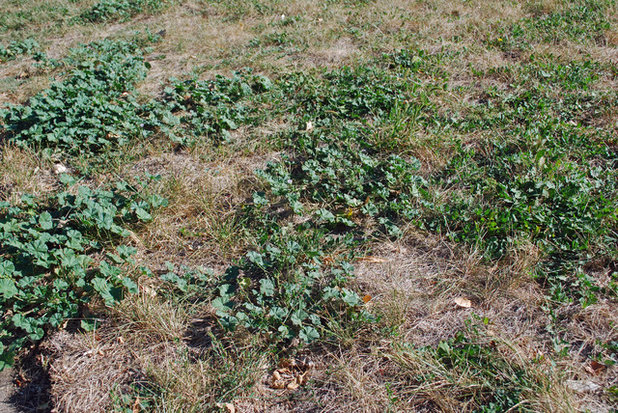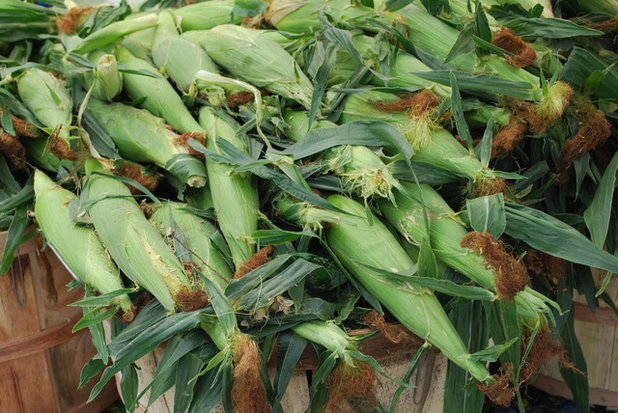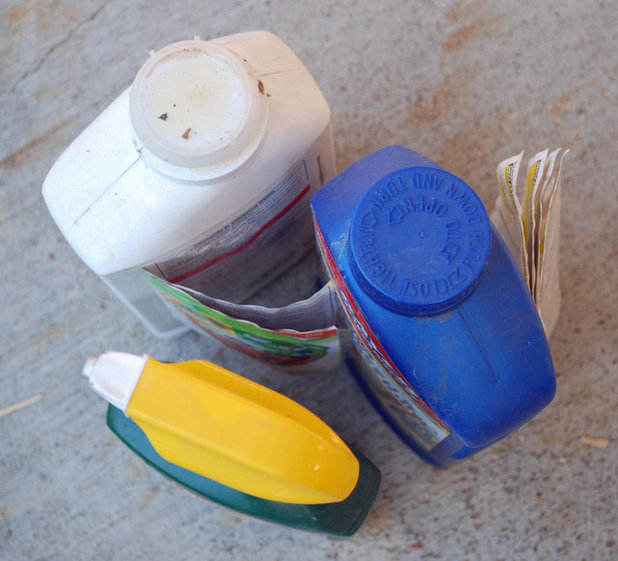Sometimes, despite our best efforts, it’s time to bring out the big guns of weed management: the chemicals. Think carefully before using chemical herbicides in your landscape, and make sure they're part of an integrated pest management approach that includes:
- Identifying the specific problem plant.
- Understanding the plant’s life cycle. Is it an annual or a perennial? Does it spread by seed, roots or both? If it spreads by seed, when does it germinate?
- Using cultural (growing conditions that discourage weeds) or mechanical means of control first, whenever possible.
- Recognizing when and how a weed invasion may cause catastrophic damage to a natural habitat, crop or structure.
Once you've determined that an herbicide is the appropriate step in managing your weed problem, you can evaluate the options and select the right product for your situation.

Jocelyn H. Chilvers
First, let's get familiar with the terminology. Herbicides are used as
pre-emergents, by inhibiting plant seeds from germinating, or as
postemergents, meaning they work on actively growing plants.
Some are
nonselective and affect any plants they contact, while others are
selective and will control only specific plants.
Contact herbicides affect only the plant tissue on which they are applied, while
systemic herbicides are absorbed into the entire plant and root system.
Chemical controls may be
natural or
synthetic. Ideally, all herbicides should be applied by a licensed pesticide applicator.

Jocelyn H. Chilvers
Natural HerbicidesThe active ingredients in natural herbicides come from plants or minerals. These products are subject to government regulations for personal and environmental safety. Read all product labels thoroughly and follow them with care.
Corn gluten meal. The protein part of a corn kernel is a selective, pre-emergent herbicide most commonly used to control annual weeds — such as
oxalis,
purslane and
spurge — in lawns. It’s also about 10 percent nitrogen, so it helps promote healthy turf. Corn gluten meal is most effective when applied twice a year. Apply it before the seed germinates and forms a root. A dry period following germination is also necessary. Learn more about timing corn gluten meal applications here.
Vinegar. It's a nonselective, postemergent and contact herbicide for annual weeds. Apply horticultural vinegar solutions, which have less than 20 percent acetic acid, as a spray to the weeds’ foliage. The acid acts as a contact desiccant (“burning” the foliage but not the roots) and is most effective when applied to annual weeds in the heat of summer.
Soap. Horticultural soaps, derived from fatty acids, are nonselective, postemergent, contact herbicides. Sprayed on the weeds' leaves, the product smothers the foliage, inhibiting the plants' growth. Horticultural soaps are most effective on young, actively growing, annual weeds.
Iron. The newest kid on the block uses a 1.5 percent solution of FeHDTA (an iron chelate) as its active ingredient. A selective, systemic, postemergent herbicide, the applied iron dose is toxic to several common broad-leaf weeds but does not have a detrimental effect on turf grasses.

Jocelyn H. Chilvers
Synthetic Herbicides Synthetic herbicides have man-made components subject to government regulations for personal and environmental safety. Remember: Read and follow product labels carefully.
Glysophate and
glufosinate ammonium. These nonselective, systemic herbicides may be effective on noxious perennial weeds such as
field bindweed,
myrtle spuge and
quackgrass. Research shows that a very specific application regime — the time of year, the stage in the plants’ life cycle, and the method of application — is crucial to the most efficient and effective use of this herbicide.
2,4-D and
Tryclopyr. Both of these compounds are selective, systemic, postemergent herbicides useful for controlling many annual and perennial broadleaf weeds such as
puncturevine,
kochia,
Canada thistle and
orange hawkweed. They're effective on weeds in lawns and around conifers.
Your local Cooperative Extension Office will have more research on how to identify and control the weeds in your region.
More:5 Ways to Naturally Win the Weed War
Tackle Weeds the Natural Way
5 Weed-Smothering Ground Covers





